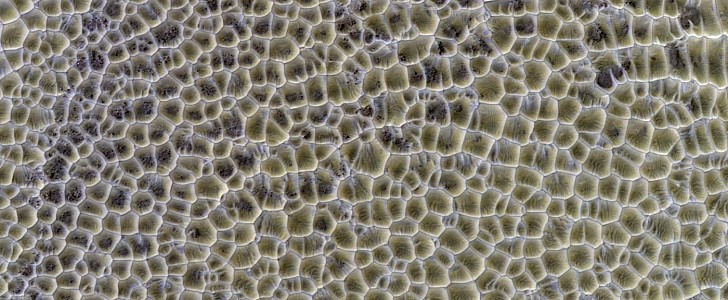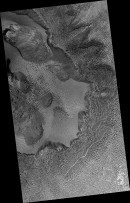In the not so distant future, humans will probably head over to Mars and see what’s really there. But before we actually set foot on the planet, a number of observations need to be made so we can get a better understanding of the place. And there’s nothing better at observing the surface of Mars than the namesake Mars Reconnaissance Orbiter.
MRO, as it is also known, arrived in orbit around Mars in 2006, and has been taking incredible snapshots of the surface ever since, using the mighty High Resolution Imaging Experiment (HiRISE). You’ve seen quite the number of these photos being featured here on autoevolution as well because, we reckon, some of you might be interested in seeing snippets of the next planet humanity is likely to call home.
For today, we have something really peculiar in this respect. It’s an image taken all the way back in 2013 and republished recently by the University of Arizona, one of the groups running HiRISE, back in July. It shows a region of Mars (297.671° longitude east, -41.433° latitude centered) that looks unsettlingly like the sea sponges we have here on Earth.
The image was captured by HiRISE from an altitude of 252 km (157 miles), so this photo shows a place significantly larger than the tiny sponges we have in our seas – about 1 km across (0.62 miles). Scientists call these strange formations polygonal dunes and are, you guessed, just one of Mars’ fancy ways of arranging its sand.
These formations are born when the ridges of sand dunes intersect. Some of them, say the scientists, can “become indurated and eroded” over time, and that makes it difficult to know whether the polygons were the result of wind or are evidence for a dried-up lakes.
What’s more important is that these polygon shapes, which have been spotted on the surface of Mars elsewhere, including in the planet’s arctic region, can be an indication of shallow ice.
For today, we have something really peculiar in this respect. It’s an image taken all the way back in 2013 and republished recently by the University of Arizona, one of the groups running HiRISE, back in July. It shows a region of Mars (297.671° longitude east, -41.433° latitude centered) that looks unsettlingly like the sea sponges we have here on Earth.
The image was captured by HiRISE from an altitude of 252 km (157 miles), so this photo shows a place significantly larger than the tiny sponges we have in our seas – about 1 km across (0.62 miles). Scientists call these strange formations polygonal dunes and are, you guessed, just one of Mars’ fancy ways of arranging its sand.
These formations are born when the ridges of sand dunes intersect. Some of them, say the scientists, can “become indurated and eroded” over time, and that makes it difficult to know whether the polygons were the result of wind or are evidence for a dried-up lakes.
What’s more important is that these polygon shapes, which have been spotted on the surface of Mars elsewhere, including in the planet’s arctic region, can be an indication of shallow ice.












